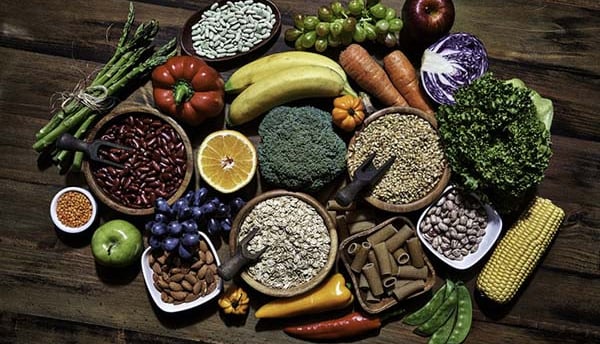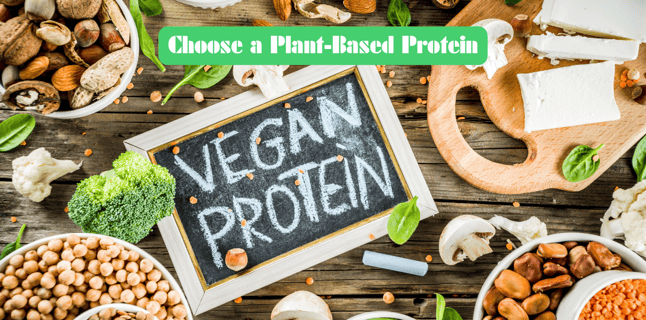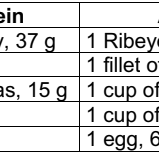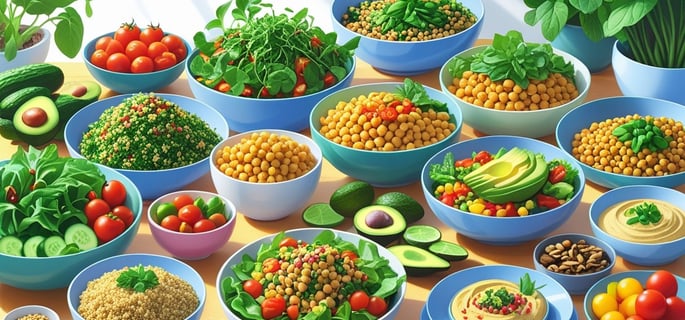Fiber vs. Protein: Essential Insights for Plant-Based Eatersour
Fiber vs. Protein. As you transition to a more plant-based diet, two nutrients frequently come into play: fiber and protein. But which is more important? Are plant-based eaters getting enough of both? And what foods provide the best sources of each?
🧠 MINDFUL & BALANCED EATING


The reality is that both fiber and protein are vital, but many people tend to focus more on one.
This guide will clarify how these nutrients function, their significance in your diet, and how to ensure you’re getting plenty of both while eating plant-based.
Why Protein Claims the Spotlight (But Fiber Is Just as Crucial)
In fitness and weight loss discussions, protein is often hailed as the premier nutrient. It plays a key role in muscle building, hormone support, and maintaining a feeling of fullness.
However, fiber is equally essential and frequently underestimated. While most individuals manage to meet their protein needs, a staggering 95% of people fall short on fiber intake.
Fiber is crucial for digestion, blood sugar regulation, heart health, and even achieving radiant skin.
And here’s the kicker: fiber can only be sourced from plants.
Understanding Fiber
Fiber is a type of carbohydrate that our bodies can’t digest.
Unlike sugars or starches, fiber travels through the digestive system, promoting regularity and overall digestive health.
There are two primary types of fiber: -
Soluble Fiber:
Absorbs water, aiding in blood sugar control and cholesterol levels.
Insoluble Fiber:
Adds bulk to stool, promoting regular bowel movements.
Fiber also nourishes the beneficial bacteria in your gut, helping to quell inflammation and bolster your immune system.
The Role of Protein
Protein consists of amino acids, which are the building blocks for muscles, skin, hair, and various enzymes.
It’s essential for tissue repair, oxygen transport in the bloodstream, and maintaining hormonal health.
While animal products are considered complete proteins, it’s entirely possible to fulfill your protein needs through a diverse range of plant-based foods.
How Much Fiber and Protein Do You Need?
Fiber:
Women should aim for about 25 grams per day, while men should target 38 grams (yet most consume only around half).
Protein:
The general recommendation is 0.8 grams per kilogram of body weight; this translates to about 46 grams per day for women and 56 grams for men.
The great news?
Many plant-based foods provide both fiber and protein, making it easier than you might think to meet your dietary needs.
Top Plant-Based Sources of Fiber and Protein
Consider these nutrient-packed options that deliver impressive amounts of both:
Lentils: 18g protein + 16g fiber per cup
Chickpeas: 15g protein + 12g fiber per cup
Quinoa: 8g protein + 5g fiber per cup
Black Beans: 15g protein + 15g fiber per cup
Chia Seeds: 5g protein + 10g fiber per ounce
Oats: 6g protein + 8g fiber per cup
Edamame: 17g protein + 8g fiber per cup. Incorporate leafy greens, sweet potatoes, nuts, and whole grains to amp up your fiber intake.
Here’s the approximate amount of fiber found in various plant-based foods:
- 1⁄2 cup of black beans, 7 g - 1⁄2 cup of cooked broccoli, 5 g
- 1 Apple, 4 g - 1⁄2 cup Bran cereal (no sugar), 14 g
- 1 cup cooked brown rice, 3.5 g - 1 cup of oatmeal,
Here are examples of the approximate amount of protein found in plant-based foods versus animal protein:
Dispelling Common Myths
Myth #1: You can’t obtain enough protein without consuming meat.
Truth: You can absolutely meet your protein needs through a variety of plant-based options like beans, grains, and seeds.
Myth #2: If you're eating "clean," fiber isn't a concern.
Truth: Even those who prioritize healthy eating can miss out on sufficient fiber.
Tracking your intake is important.
Myth #3: Protein is more critical than fiber.
Truth: Both are necessary and serve different functions in the body; prioritizing one over the other is unnecessary.
Key Takeaway
A well-balanced plant-based plate should include an ample supply of both fiber and protein.
Fortunately, nature simplifies this. When you focus on a variety of whole foods such as legumes, grains, seeds, and vegetables, you’ll likely achieve a harmonious balance of both nutrients without extra effort.
Conclusion
If you're embracing plant-based eating or simply striving for a healthier lifestyle, avoid getting caught in the trap of prioritizing protein to the detriment of fiber. The optimal strategy? Construct your meals around fiber-rich whole foods that also deliver clean, plant-based protein. It’s not about choosing one nutrient over the other; it’s about harnessing the power of both to help you feel strong, satisfied, and vibrant from the inside out.
Eat & Glow ✯ Nourish from the Inside Out.






Eat&Glow
Wholesome recipes and expert wellness tips await.
Energy
contact@eatandglow.com
© 2025. All rights reserved.
